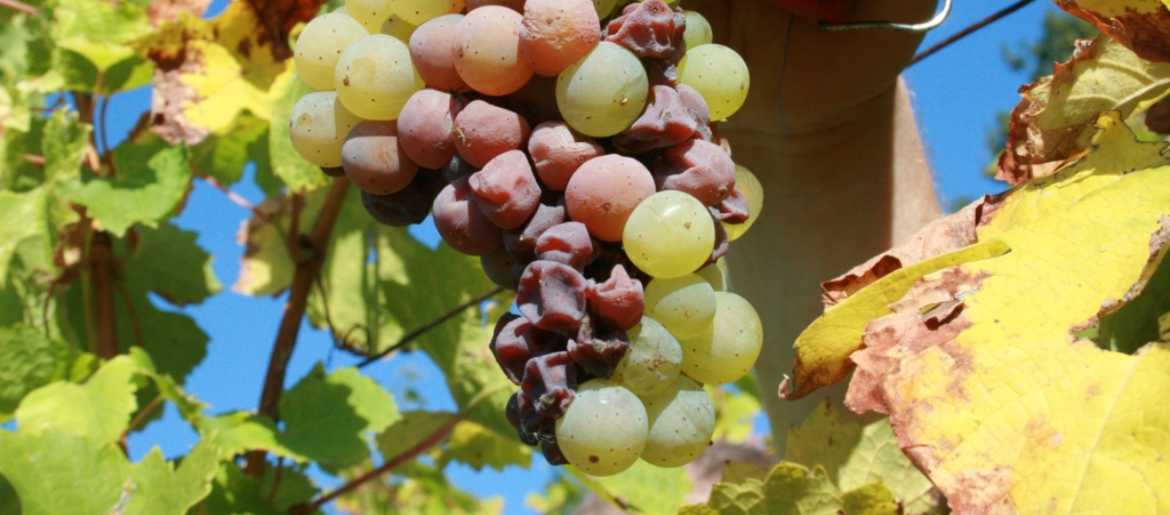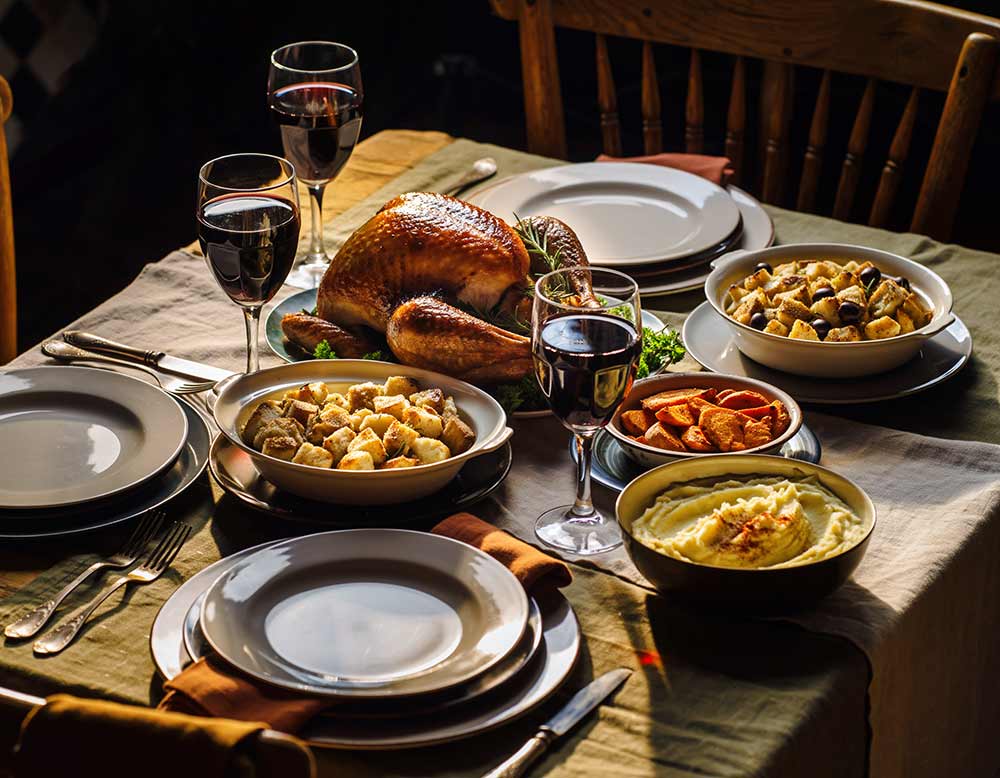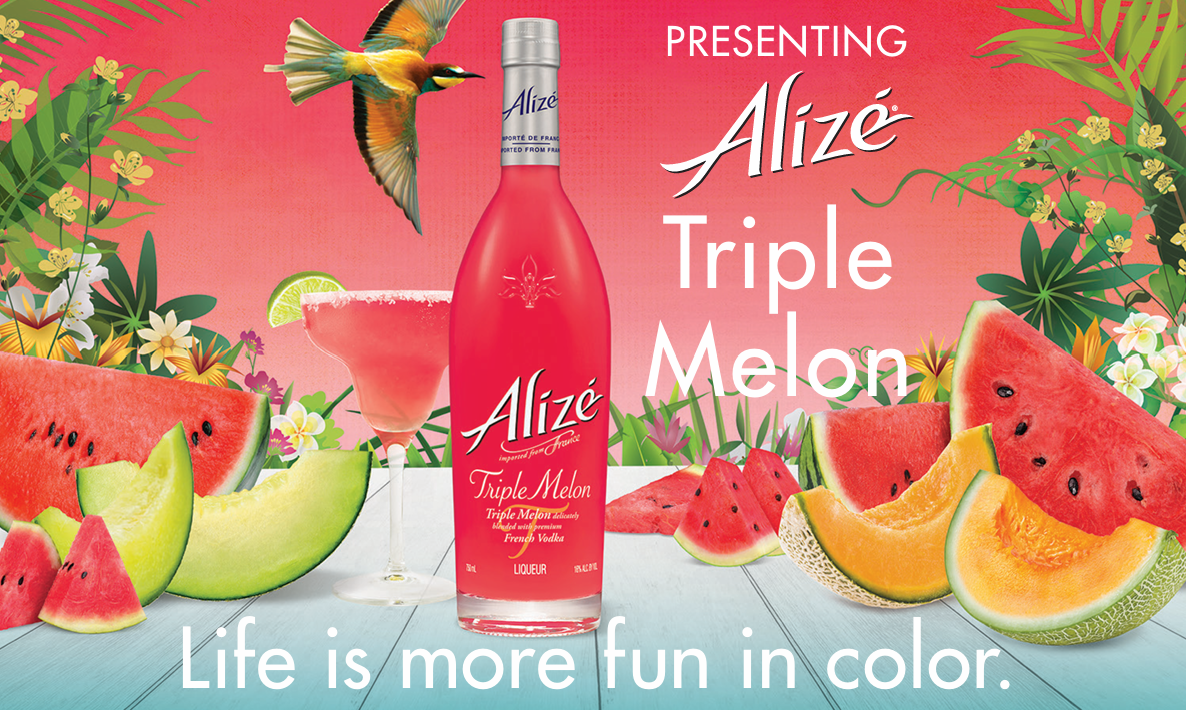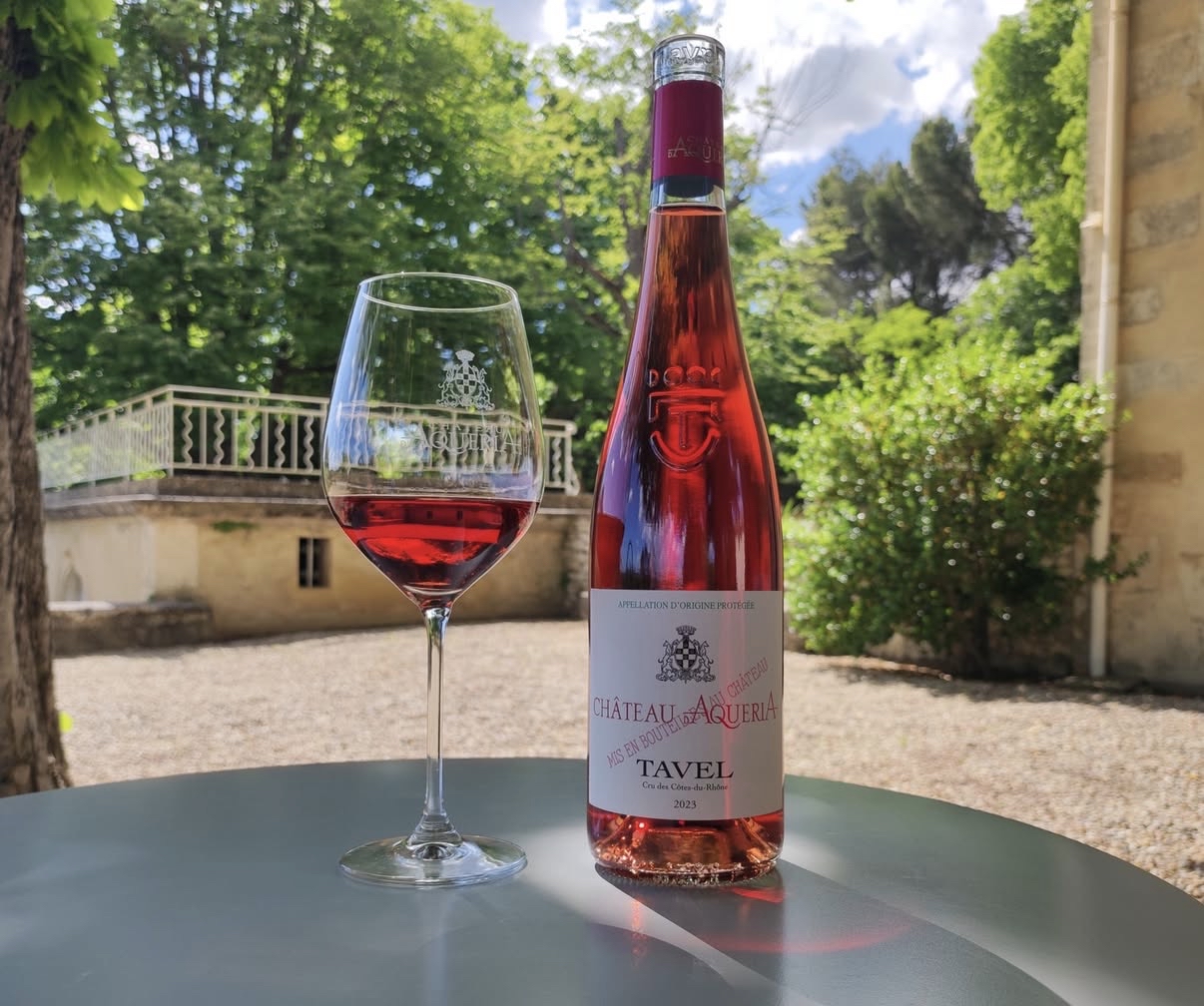The fungi are a fascinating group of living organisms. More than 100,000 species have already been identified and twice that number may exist. One particular fungus, Penicillium roqueforti, was first found in caves near the French village of Roquefort. As the story goes, a piece of cheese was left in a cave and a few weeks later was found to have acquired a tart, pungently fragrant character from the fungus infection. Today, only cheeses from around these caves can use the name Roquefort. Similarly, the fungus Penicillium camemberti give Camembert cheese its unique flavor.
What’s Fungi Got to Do With Wine?
There is a group of over 50 different parasitic fungi that grow on grapes producing what is called bunch rot. Even though growers spray to avoid bunch rot, moldy grapes are responsible for considerable crop loss each year. Bunch rot organisms emit unpleasant odors. Sour rot, a bacterial/bunch rot complex, produces acetic acid, imparting a vinegary smell. Aspergillis growth gives off a “smelly sock” odor, while Penicillium smells just plain rotten, making these grapes unsuitable for winemaking.
These three common bunch rots are called secondary pathogens because they can grow only where a crack already exists in a grape due to insect or bird damage or where grapes split from growing too closely together in a cluster.
It’s Called “Noble” for a Reason
While bunch rot is the bane of the winegrower’s existence, there is one fungus, Botrytis cinerea, that is required to make some of the world’s most delicious and expensive dessert wines. Botrytis cinerea is a primary pathogen because it can attack undamaged fruit. Under normal conditions, Botrytis bunch rot is responsible for annual crop losses of 1–10% in California. However, the proper set of climatic conditions transform this lowly bunch rot into what is called “noble rot.” The healthy grapes become shriveled and fuzzy, providing the raw materials the decadently sweet Sauternes of France and the exotic Trockenbeerenauslese and Berenauslese of Germany, as well as others.
Each country has its own traditional grape varieties: Semillon and Sauvignon Blanc in Sauternes, Chenin Blanc in the Loire, Riesling in Germany, and all of the above including Gewurztraminer in California and Australia. These varieties are more susceptible to bunch rot either because their thin skins are more easily pierced by the fungus or have tight clusters causing poor air circulation between the berries. Merlot and Cabernet Sauvignon for example, are thick-skinned, loose-clustered varieties and are therefore less prone to rot.
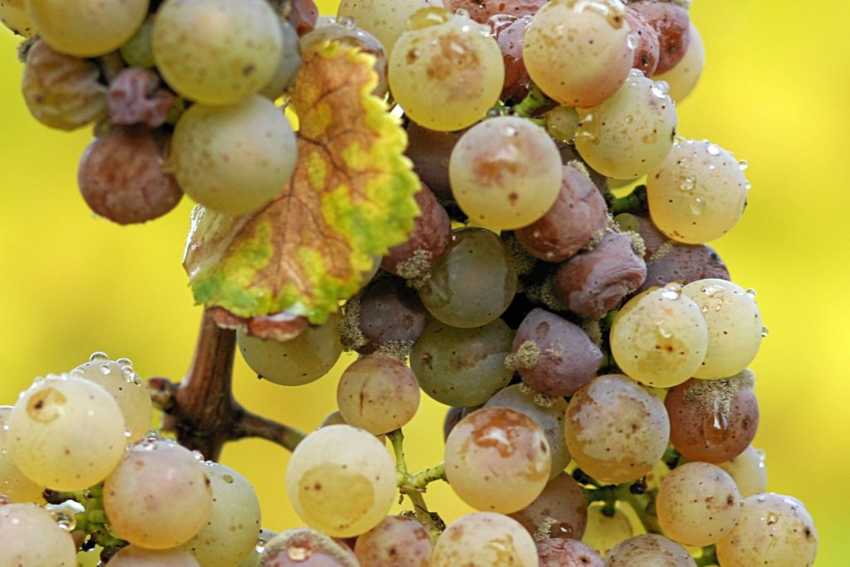
Perfect Conditions
The Botrytis spores are present in the vineyards throughout the year but remain dormant until the proper weather conditions prevail: a combination of cool temperatures and high humidity. A common scenario is for morning fog from a nearby body of water to settle on the grape surface, initiating an “infection.” The fungus pokes minute holes in the skin of the berries, allowing water to evaporate and causing shriveling. Extremely hot weather (above 90°F) will dry up the infection altogether and cause raisining. Continued wet weather or high humidity following the initial onset of Botrytis results in a mixed bag of fungal infections without the simultaneous dehydration of the fruit.
Under ideal conditions, the afternoon sun dries up the moisture halting the growth of Botrytis and causing desiccation as water evaporates from the grape pulp. After this cycle of morning sun and afternoon fog continues for 3–10 days, the grapes dry and shrivel into what resemble fuzzy raisins. The clusters, portions of clusters, or even single berries affected with noble rot are harvested individually, hence the term “special select late harvest.” If temperature and humidity remain favorable, further noble rot occurs and successive harvests are made.
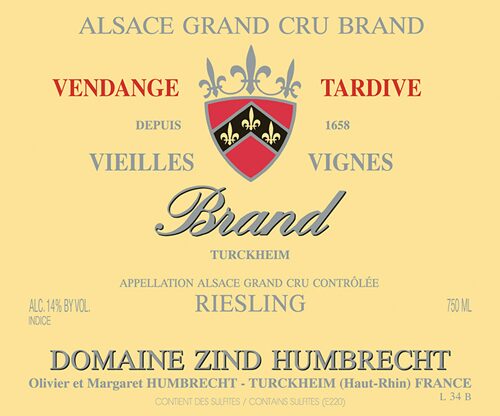
Let’s Taste the Nectar of the Gods
The trademark viscosity of these wines comes from the high sugar concentration as well as the fungus’ production of large quantities of glycerin. This viscosity not only adds to the satiny mouthfeel of late harvest wines but also causes some of the many difficulties associated with their vinification. Besides attracting bees, making harvesting hazardous, the high sugar musts are a difficult environment for the yeast to grow in. Fermentation may be difficult to start and may require several months to complete compared to a week for table wine fermentation. The finished wines are so thick that they are difficult to pump and clog conventional filters.
Another attribute of these late harvest wines is their dark color. Botrytis mold produces an enzyme that causes browning, giving the wines their yellow color, which intensifies to a golden hue as they age. Dessert wines made from botrytized grapes have considerably greater aging potential than table wines. Like Madeira and Port, the high sugar concentration preserves the wine against microbial growth as it ages in the bottle or after it is opened.
The aromas alone are seductive and the taster derives great pleasure from simply smelling the rich apricot and honeysuckle perfume of a late harvest wine. The intense sweetness followed by the scintillating jolt of acidity makes the wine drinker’s mouth gush with pleasure. Why else have these wines been given the accolade, “nectar of the gods?”
